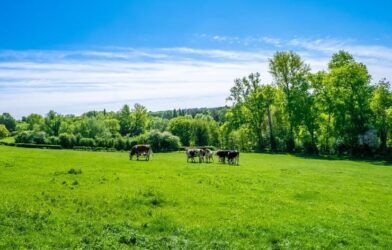- Yogi govt prepares strategy for quality production of Rabi crops
- Planned efforts will be made to increase production, enhance productivity and crop density
- Focus is on pulses and oilseeds, along with food grains
By Our Correspondent
Lucknow: The Yogi government has formulated a strategy aimed at boosting the yield and productivity of food grain and oilseed crops during the upcoming Rabi season.
During the Rabi season of 2022, cultivation was carried out across 136.06 lakh hectares of land, resulting in a harvest of over 427.83 lakh metric tonnes. For the upcoming Rabi season of 2023, a target has been set to cultivate food grains and oilseed crops on 134.85 lakh hectares of land, with the objective of achieving a production of 448.66 lakh metric tonnes.
Within the government’s Rabi Production Strategy for 2023, distinct production objectives have been outlined for a range of crops. The overall target is to achieve 428.77 lakh metric tonnes of total food grains production and 19.90 lakh metric tonnes of oilseed production, resulting in a (total production of 448.66 lakh metric tonnes). The targets are further divided into crops such as wheat, barley, maize, and gram, as well as peas, lentils, mustard, rapeseed, and linseed.
Increasing the cropping intensity
In addition to increasing the income of farmers, the government is also focused on enhancing productivity and production while reducing the cost of production. To achieve greater cropping intensity, farmers are encouraged to take two or three crops in a year and are made aware to sow rapeseed or lahi in the fields vacant from sowing in the Kharif season.
Additionally, in the areas where sugarcane is being cultivated, the government is also encouraging the sowing of wheat varieties in the fields vacant from sugarcane, and in cases of delayed availability of these fields after sugarcane harvest, early maturing pigeon peas are being recommended for planting.
Farmers are being made aware of the cultivation of hybrid maize in Deoria, Kushinagar, Gonda, Balrampur, Bahraich, Shravasti, Ballia, Siddharthnagar, Maharajganj, Azamgarh, Basti, Barabanki, Ayodhya, Sitapur, Kheri and Jaunpur, where maize is cultivated. Similarly, to increase productivity, a special strategy will also be prepared in relation to the blocks with minimum productivity.
Increase in Productivity
Wheat cultivation covers the largest area in Uttar Pradesh. Due to climatic differences, lack of resources, unbalanced use of agricultural inputs, and not taking full advantage of advanced technology, the productivity of wheat in the state is less than that of Punjab and Haryana. There is a huge difference in the productivity of different crops in various districts of the state.
To increase productivity, a proper strategy should be made in relation to the block/nyay panchayat with minimum productivity, and quick implementation should be ensured by making plans and executing intensive methods to increase productivity at the district level. An appropriate strategy is being prepared in the district to increase productivity by selecting crops and species on the basis of regional suitability and available resources and using advanced agricultural technology.
Furthermore, clear instructions have been issued to the Power Corporation, Irrigation and Water Resource Department in Uttar Pradesh to ensure uninterrupted electricity supply during crop production, adherence to canal water schedules, and the maintenance of government tube wells.
Farmers will be encouraged to use purified seeds and conduct soil testing for the optimal application of micronutrients, which have proven to be highly beneficial. Special emphasis will be placed on these aspects to enhance agricultural productivity.












